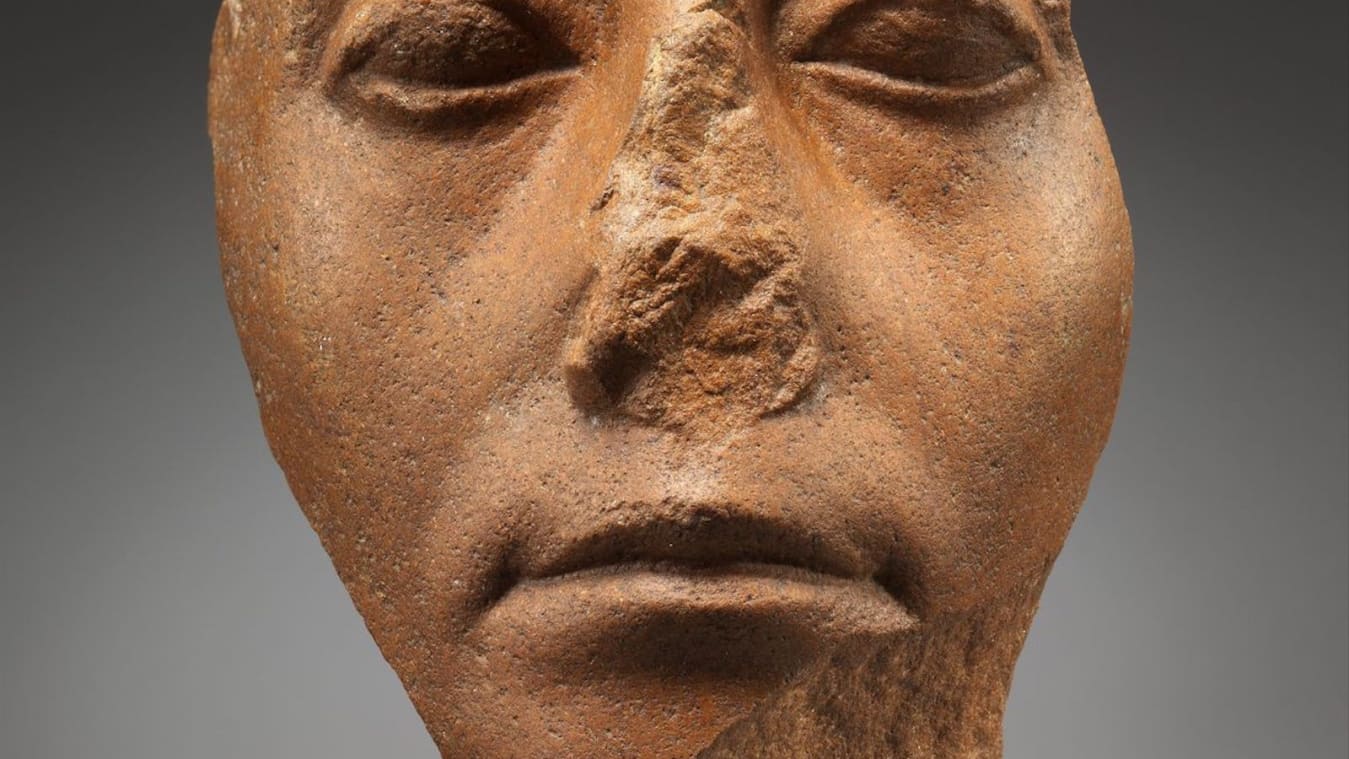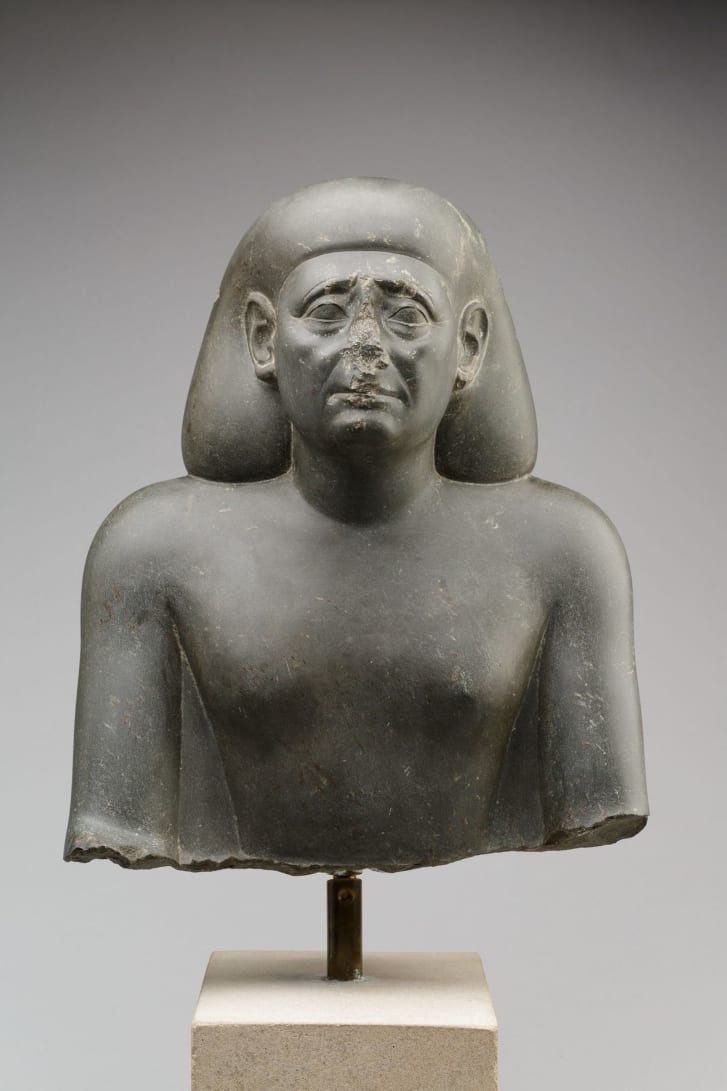The
most common question that curator Edward Bleiberg fields from visitors
to the Brooklyn Museum's Egyptian art galleries is a straightforward but
salient one: Why are the statues' noses broken?

The most common question that curator Edward Bleiberg fields from visitors to the Brooklyn Museum's Egyptian art galleries is a straightforward but salient one: Why are the statues' noses broken?
Bleiberg,
who oversees the museum's extensive holdings of Egyptian, Classical and
ancient Near Eastern art, was surprised the first few times he heard
this question. He had taken for granted that the sculptures were
damaged; his training in Egyptology encouraged visualizing how a statue
would look if it were still intact.
It
might seem inevitable that after thousands of years, an ancient
artifact would show wear and tear. But this simple observation led
Bleiberg to uncover a widespread pattern of deliberate destruction,
which pointed to a complex set of reasons why most works of Egyptian art
came to be defaced in the first place.

Bleiberg's research is now the basis of the poignant exhibition "Striking Power: Iconoclasm in Ancient Egypt."
A selection of objects from the Brooklyn Museum's collection will
travel to the Pulitzer Arts Foundation later this month under the
co-direction of the latter's associate curator, Stephanie Weissberg.
Pairing damaged statues and reliefs dating from the 25th century BC to
the 1st century AD with intact counterparts, the show testifies to
ancient Egyptian artifacts' political and religious functions -- and the
entrenched culture of iconoclasm that led to their mutilation.
In
our own era of reckoning with national monuments and other public
displays of art, "Striking Power" adds a germane dimension to our
understanding of one of the world's oldest and longest-lasting
civilizations, whose visual culture, for the most part, remained
unchanged over millennia. This stylistic continuity reflects -- and
directly contributed to -- the empire's long stretches of stability. But
invasions by outside forces, power struggles between dynastic rulers
and other periods of upheaval left their scars.

"The
consistency of the patterns where damage is found in sculpture suggests
that it's purposeful," Bleiberg said, citing myriad political,
religious, personal and criminal motivations for acts of vandalism.
Discerning the difference between accidental damage and deliberate
vandalism came down to recognizing such patterns. A protruding nose on a
three-dimensional statue is easily broken, he conceded, but the plot
thickens when flat reliefs also sport smashed noses.
The
ancient Egyptians, it's important to note, ascribed important powers to
images of the human form. They believed that the essence of a deity
could inhabit an image of that deity, or, in the case of mere mortals,
part of that deceased human being's soul could inhabit a statue
inscribed for that particular person. These campaigns of vandalism were
therefore intended to "deactivate an image's strength," as Bleiberg put
it.
Tombs
and temples were the repositories for most sculptures and reliefs that
had a ritual purpose. "All of them have to do with the economy of
offerings to the supernatural," Bleiberg said. In a tomb, they served to
"feed" the deceased person in the next world with gifts of food from
this one. In temples, representations of gods are shown receiving
offerings from representations of kings, or other elites able to
commission a statue.
"Egyptian
state religion," Bleiberg explained, was seen as "an arrangement where
kings on Earth provide for the deity, and in return, the deity takes
care of Egypt." Statues and reliefs were "a meeting point between the
supernatural and this world," he said, only inhabited, or "revivified,"
when the ritual is performed. And acts of iconoclasm could disrupt that
power.
"The
damaged part of the body is no longer able to do its job," Bleiberg
explained. Without a nose, the statue-spirit ceases to breathe, so that
the vandal is effectively "killing" it. To hammer the ears off a statue
of a god would make it unable to hear a prayer. In statues intended to
show human beings making offerings to gods, the left arm -- most
commonly used to make offerings -- is cut off so the statue's function
can't be performed (the right hand is often found axed in statues
receiving offerings).
"In
the Pharaonic period, there was a clear understanding of what sculpture
was supposed to do," Bleiberg said. Even if a petty tomb robber was
mostly interested in stealing the precious objects, he was also
concerned that the deceased person might take revenge if his rendered
likeness wasn't mutilated.
The
prevalent practice of damaging images of the human form -- and the
anxiety surrounding the desecration -- dates to the beginnings of
Egyptian history. Intentionally damaged mummies from the prehistoric
period, for example, speak to a "very basic cultural belief that
damaging the image damages the person represented," Bleiberg said.
Likewise, how-to hieroglyphics provided instructions for warriors about
to enter battle: Make a wax effigy of the enemy, then destroy it. Series
of texts describe the anxiety of your own image becoming damaged, and
pharaohs regularly issued decrees with terrible punishments for anyone
who would dare threaten their likeness.

Source: CNN


No comments:
Post a Comment